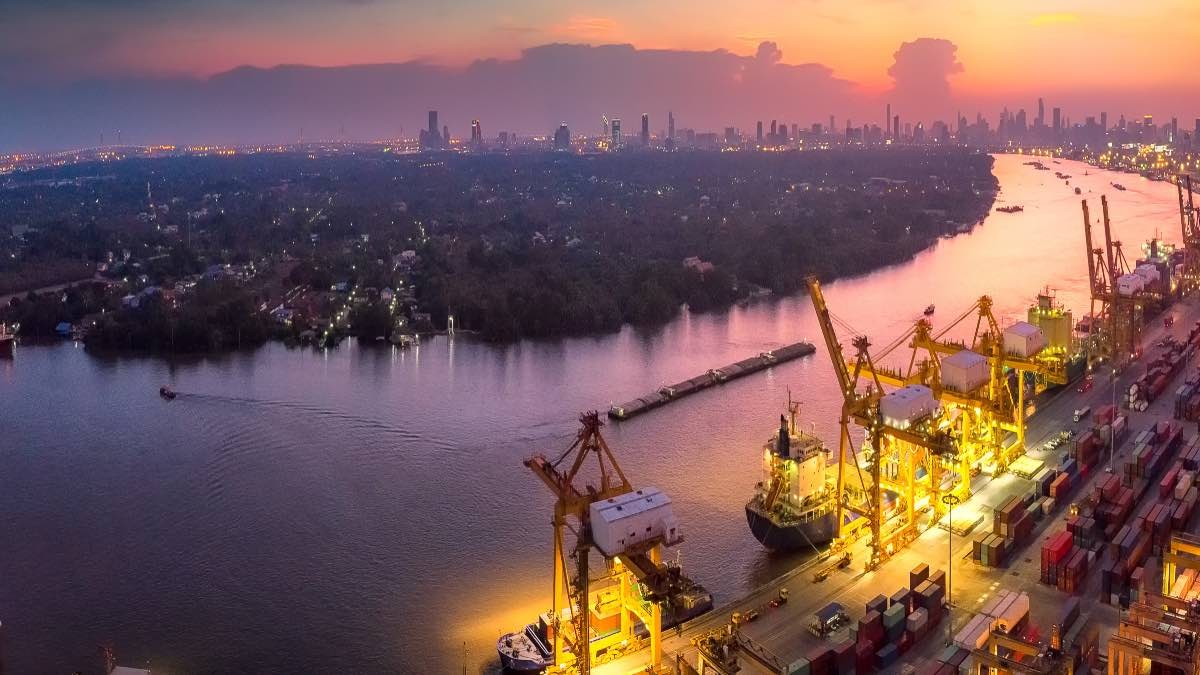Resilience, reshoring and the ultimate trade shock

Global commodities and goods supply chains need reinforcing
By Carly Fields
Global supply chains for goods and commodities were already fractured before Covid-19 arrived. All the pandemic did was amplify the “profound fault lines” in the functioning of those chains and lay bare where improvements need to be made, according to UNCTAD.
Piergiuseppe Fortunato, economic affairs officer at the UN trade body, highlights the “fragility” of current models which are characterised by high interdependencies between suppliers and traders around the world.
The re-evaluation of offshoring production that started before the pandemic and then stepped up as Covid-19 hit is expected to lead to a glut of relocations and switches to reshoring.
“With most economies under full or partial lockdown and with trade and investment contracting, the future of offshoring is more uncertain than pre-Covid-19,” Fortunato said, highlighting a predicted fall of between 13% and 32% in trade from the World Trade Organization.
But reshoring and relocations bring their own challenges for the recipient economy. Reshoring can “cause significant economic and social costs much beyond the immediate job and business turnover losses”; and relocations “trickle down rapidly to the local economy, affecting the local supply chain, the offer of local services and (in the medium and long run) the quality of infrastructure”, said Fortunato.
With most economies under full or partial lockdown and with trade and investment contracting, the future of offshoring is more uncertain than pre-Covid-19
Building resilience
McKinsey Global Institute (MGI) in its Risk, resilience, and rebalancing in global value chains report, forecasts that production of some 16% to 26% of global trade, worth $2.9 trillion to $4.6 trillion, could move across borders in the medium term. This could involve some combination of reverting to domestic production, nearshoring, and shifting to different offshore locations.
MGI’s report examined the growing frequency and severity of a range of shocks, assessing how different value chains are exposed. Adjusted for the probability and frequency of disruptions, it calculates that companies can expect to lose more than 40% of a year’s profits every decade, based on a model informed by the financials of 325 companies across 13 industries. However, a single severe shock causing a 100-day disruption could wipe out an entire year’s earnings or more in some industries—and events of this magnitude can and do occur, it warns.
Moving the physical footprint of production is only one of many options for building resilience to resist, withstand, and recover from shocks, says MGI. Other options include strengthening risk management capabilities and improving transparency; building redundancy in supplier and transportation networks; holding more inventory; reducing product complexity; creating the capacity to flex production across sites; and improving financial and operational capacity to respond to shocks and recover quickly from them.
Disasters, points out MGI, have always been with us, “but the range of what is possible has grown, as has the ability of these events to touch the world’s value chains either directly or indirectly.” Today’s global chains and greater global connectivity allow shocks to travel from one part of the world to another faster than ever. As such, MGI warns of more acute climate events such as intense and/or more frequent heat waves and wildfires, and geopolitical challenges with “a real chance that tariffs and nontariff barriers will continue to rise, reversing decades of trade liberalisation”.
A single severe shock causing a 100-day disruption could wipe out an entire year’s earnings or more in some industries.
Possible shocks
As an example of brewing geopolitical trade shocks, Mervyn Piesse, research manager working on the Global Food and Water Crises Research Programme at independent researcher Future Directions International, points to the increasingly politicised Australia-China trade relationship. “Australia,” he says, “is becoming increasingly exposed to Chinese coercion as a result of a high proportion of its exports being sold to China. While Australian agricultural exports remained steady year-on-year in the first six months of 2020, the latest trade data from China suggests that tariffs and other trade barriers are starting to take a toll on the trade relationship.”
This deterioration in relations is pushing Australia to develop other export markets to reduce its reliance on China. “The current situation, where more than one-third of Australian exports are destined for China … is clearly unsustainable. Beijing has demonstrated that it will use the trade relationship to apply pressure on Canberra. As high-quality, premium agricultural goods are in high demand globally, there is no shortage of alternative markets for Australian agricultural commodities,” he said.
Another potential trade shock comes in the form of China’s “dual circulation” strategy, first announced in May. This strategy looks to find a balance away from global integration and toward increased domestic reliance and will strengthen China’s economic resilience in the face of global economic uncertainties with a move away from globalisation.
As high-quality, premium agricultural goods are in high demand globally, there is no shortage of alternative markets for Australian agricultural commodities
Analysts at the Center for Strategic and International Studies said that if the strategy begins to bear fruit, the impacts on the global economy would be “momentous”. “While Chinese policymakers and commentators have been clear that the dual circulation strategy does not mean a full-scale pivot away from global economic integration or reliance on external demand, even a marginal shift by China away from its focus on mercantilist export practices could fundamentally reshape global trade and investment flows,” they said.
Increasing resilience to possible trade shocks is one thing, propping up global trade if China changes the rules is quite another and should that happen no amount of nearshoring or relocation will help protect global trade in the future.